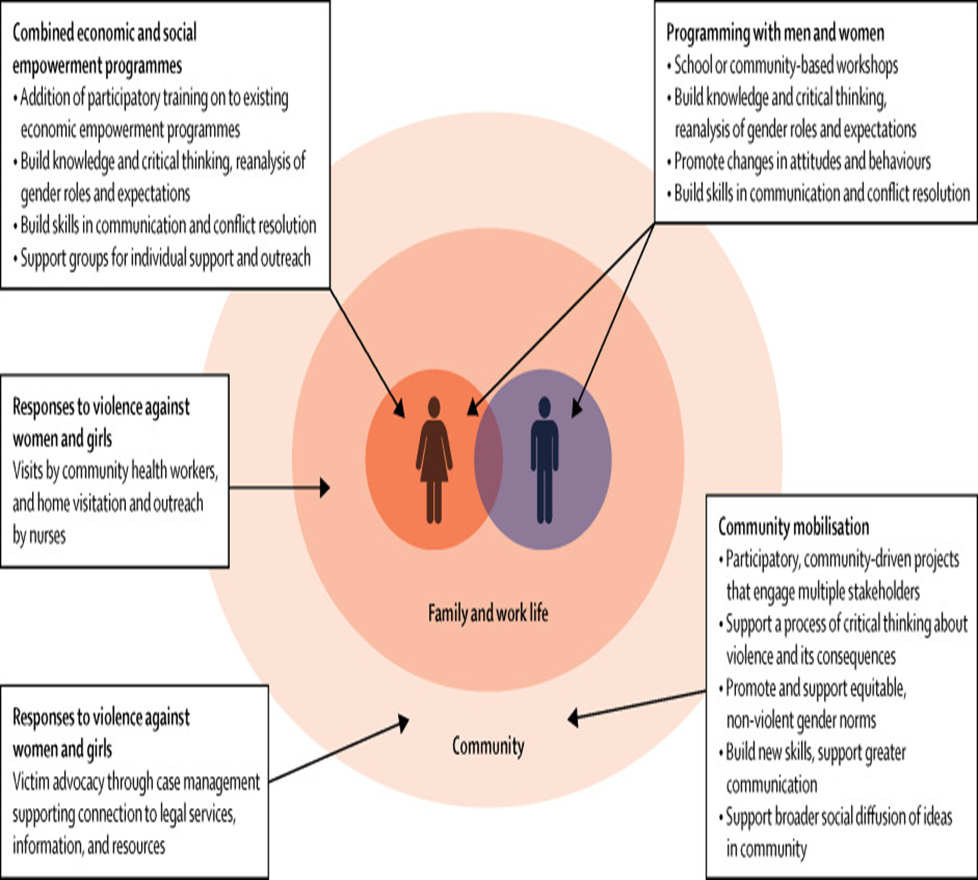THE ISSUE OF INSTITUTIONAL VIOLENCE, ADDRESSING IT
Relevance
- GS 1 – Indian Society,
- GS 2 – Governance, Social Justice,
- GS 3 – Internal Security.
Focus
The ongoing problem of institutional violence in India is examined in this paper, with a focus on gender-based violence. It looks at the effects on survivors, the structural problems with the legal system, and the bigger picture of social justice and governance.
Source: www.thelancet.com
Current Scenario
Prevalence of Violence:
- Institutional violence, especially gender-based violence, is still a major problem in India even with the participation of millions of women voters in elections.
- Domestic abuse affects almost 50% of women, and the rate is substantially higher for Dalit women.
- This paradox that is, a high rate of political involvement along with widespread institutional violence highlights the deeply ingrained problems in Indian society.
Systemic Challenges:
- Biases and insensitivity within the police and judiciary can exacerbate institutional violence by impeding survivors’ access to justice.
- A B.P.A.I.L. research states that 39% of police show no concern for gender-based concerns, indicating a serious deficiency in the efficient application of laws intended to safeguard vulnerable populations.
Key Issues
Prolonged and Worse
- Gender-based violence:
- Though it’s commonly assumed that personal partners are the ones who commit these crimes, gender-based violence also includes institutional violence.
- After speaking with more than 200 survivors and specialists, it became clear that institutional violence exacerbates suffering, which is why politicians must take action in this area.
- Effect on Survivors:
- Victims of institutional violence may be greatly discouraged from pursuing justice. The police and court system’s sluggish and frequently callous response aggravates this.
- One paper, for instance, noted that victims frequently encounter several obstacles, such as reporting crimes and enduring drawn-out legal procedures, which might re-traumatize them and discourage other people from coming forward.
Problems in Rural India
- Access to Justice:
- Many survivors in rural India are unable to seek justice due to social and cultural impediments and the problem is made more difficult by the patriarchal framework in these places.
- Other obstacles that women, especially those from marginalized groups, must overcome include a lack of access to legal aid, literacy, and socioeconomic support.
- Impact on Health and Education:
- Survivors of institutional violence are more marginalized as a result of their limited access to livelihood opportunities, health care, and literacy.
- Due to their limited access to basic amenities, a large proportion of women living in rural areas are more vulnerable and have less prospects for social and economic mobility.
Legislative and Policy Measures
Strong Laws, Weak Implementation
- Domestic violence laws:
- India has strong laws against domestic abuse, but ineffective procedures and a lack of empathy on the part of officials make it difficult to enforce them.
- It is imperative that the justice system be reformed to include trauma-informed practices.
- According to a UN assessment, although legislation in India are progressive, enforcing them is still very difficult and frequently results in the most vulnerable people not being protected.
- Data and Stories:
- To fully grasp the scope of the problem, more information about institutional violence is required.
- According to a Samarthya research, 77% of women are afraid of the system and don’t talk about their experiences.
- Policymakers can create more effective targeted initiatives to address these concerns by gathering and sharing data on violence.
Case Studies
Bhanwari Devi Case (1992):
Kandhamal Violence (2008):
Kathua Rape Case (2018):
Unnao Rape Case (2017):
Soni Sori Case (2011):
|
Pathways to Improvement
- Inclusive Governance:
- To guarantee the efficient management of violent instances, policies must incorporate gender-sensitive training and assessment methods.
- This involves providing frequent training to judges, police officers, and medical professionals so they can respond to violent instances with the necessary urgency and sensitivity.
- Community Involvement:
- Developing a just system requires including survivors and communities in the reform process.
- Initiatives that incorporate survivors, NGOs, and community leaders in the formulation and execution of policies can guarantee that interventions are based on the experiences of the impacted parties.
Future Directions
- Legislative Reforms:
- By addressing systemic prejudices and incorporating victim feedback into policy development, the judicial system can function more effectively.
- Laws must be routinely examined and revised to address the evolving nature of gender-based violence and to seal any legal gaps that let offenders escape punishment.
- Reforms in Education:
- Educating the public about institutional violence and survivors’ rights can enable survivors to pursue justice.
- Courses on gender sensitivity, legal rights, and the significance of reporting assault ought to be offered in schools and universities.
- Economic Strategies:
- Providing survivors with healthcare, counseling, and legal assistance is essential to their rehabilitation.
- Establishing a nationwide network of support centers can provide survivors the tools they require to start over.
Conclusion
A multimodal strategy that incorporates systemic improvements, community involvement, and legislative reforms is needed to address institutional violence. India may preserve social justice values and guarantee that survivors receive necessary care by establishing a justice system that is both sensitive and inclusive. Building a society in which victims of abuse are emboldened to pursue justice and structural obstacles to their safety and recovery are removed is imperative.
Key Points
- Despite powerful legal frameworks, institutional violence continues to be a significant concern.
- Systemic biases and inefficiencies impede the enforcement of domestic violence legislation.
- Inclusive policy and educational changes are critical to tackling the core causes of violence.
- Community engagement and support programs for survivors can help them gain access to justice.
- To develop a responsive and effective judicial system, legislative improvements must take survivors’ feedback into consideration.
Mains Question
Discuss the problems and prospects for combating institutional violence in India. How can governance frameworks be improved to effectively serve survivors of gender-based violence? (250 words).
Source: The Hindu




